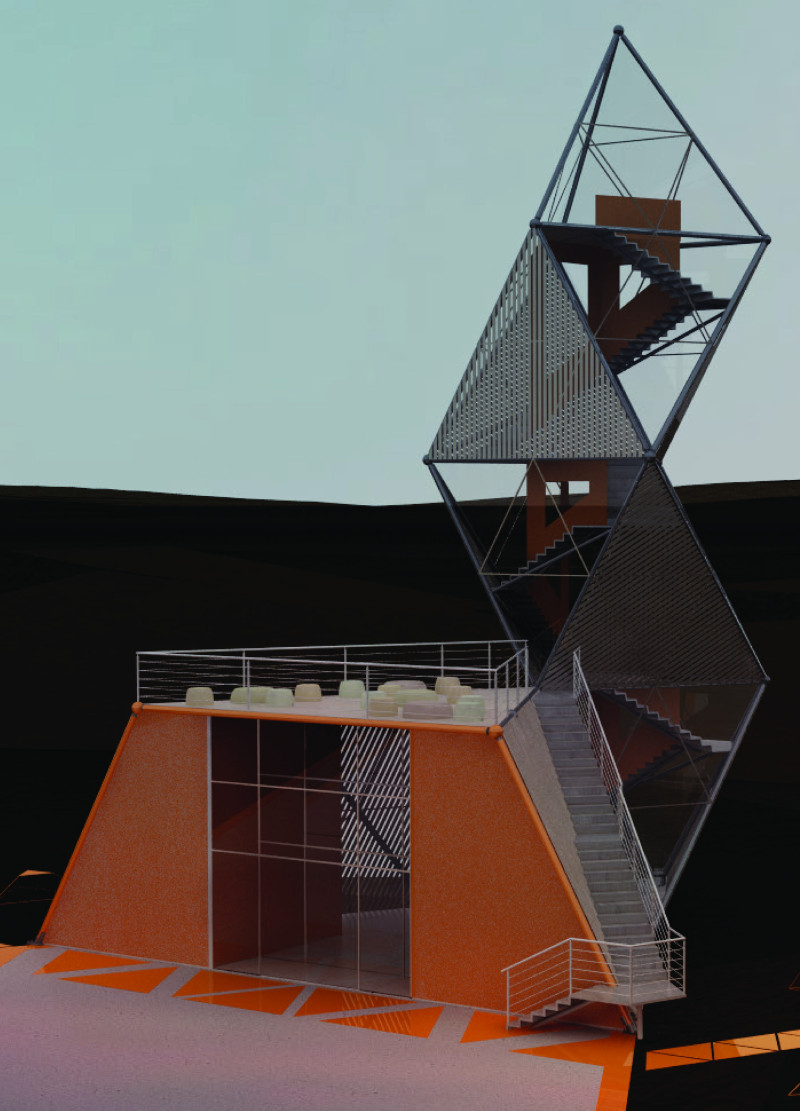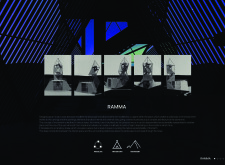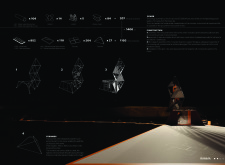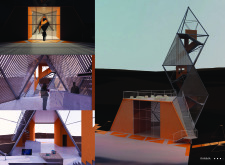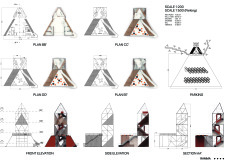5 key facts about this project
The design project is situated in a landscape that merges with its surroundings, fostering a close relationship between nature and structure. Designed as an "in situ" work, the tower modifies the landscape while also allowing itself to be shaped by the environment. Through various openings and carvings, users are encouraged to engage with the space, promoting exploration and interaction with both the building and the site.
Concept and Movement
Movement is a central theme in the design. The architecture supports a journey for users, facilitating a flow that connects the inside with the outside. The ability to disassemble and reassemble the structure means it can adapt to different contexts, offering flexibility in its use. As individuals navigate through the space, they discover different viewpoints, enhancing their experience of the environment.
Pyramids and Pathways
The pyramids serve as guiding elements along the path to the nearby caves. Designed at three heights—100 cm, 160 cm, and 210 cm—each pyramid has a specific function. The shortest is designed for seating, while the tallest incorporates solar panels for nighttime lighting. This combination of practicality and visual appeal strengthens the overall character of the design.
Energy and Sustainability
Energy considerations are important, with projected requirements at around 25,000 kWh each year from the nearby Bjarnarflag power station. This approach minimizes the impact on the environment while supporting the design's essential features. The thoughtful integration of energy sources reflects a commitment to ecological responsibility within the project.
Construction details are laid out clearly, starting with the assembly of a structural frame consisting of cylindrical beams, ball joints, and ground joints. This is followed by the installation of stairs and plasterboard walls for bathrooms and kitchen areas. Key components, such as H-section beams for holding glass, wooden beams, and laminated glass, contribute to the building's function and look. Paths created by steel pyramids guide visitors toward the caves, enhancing usability and the visual landscape experience.


